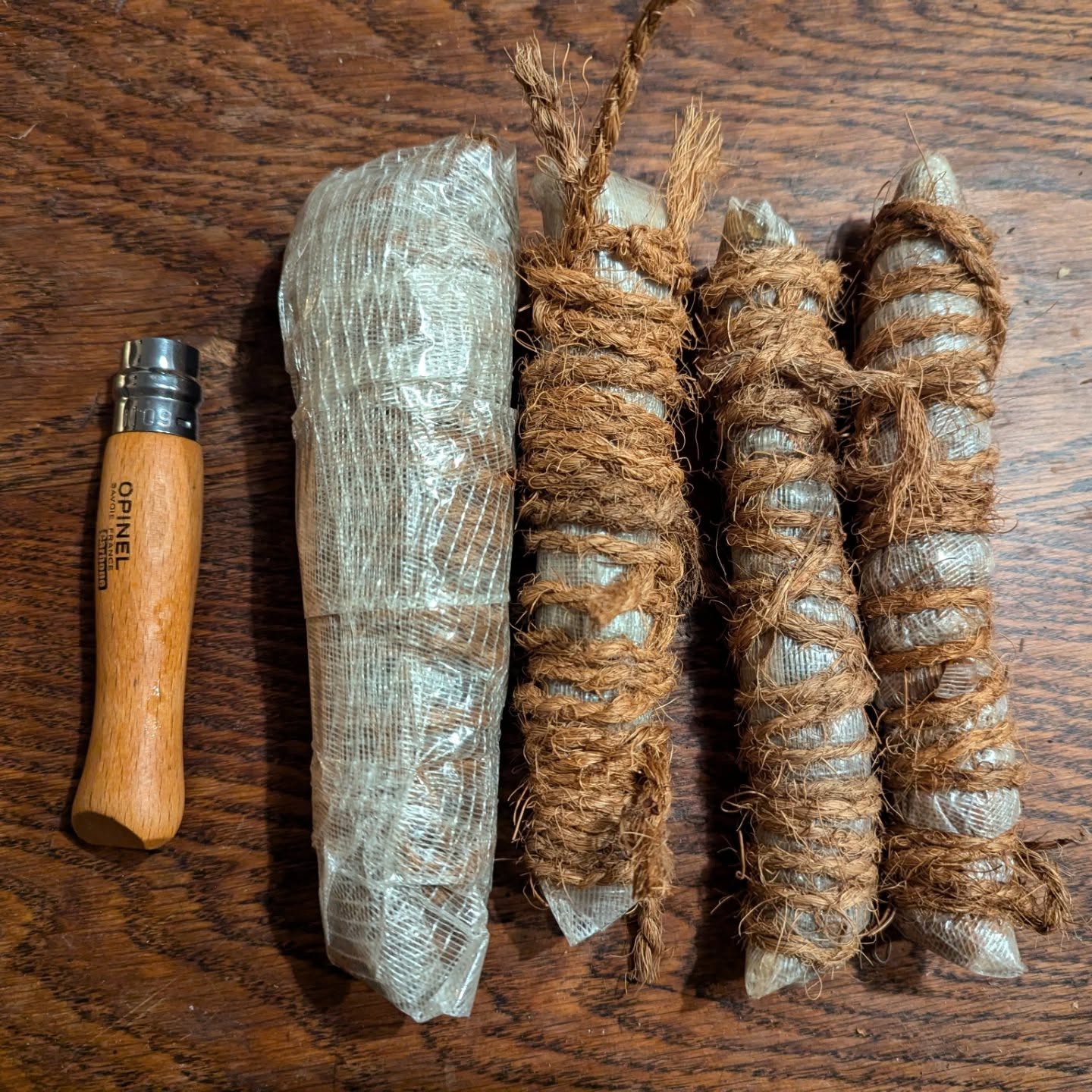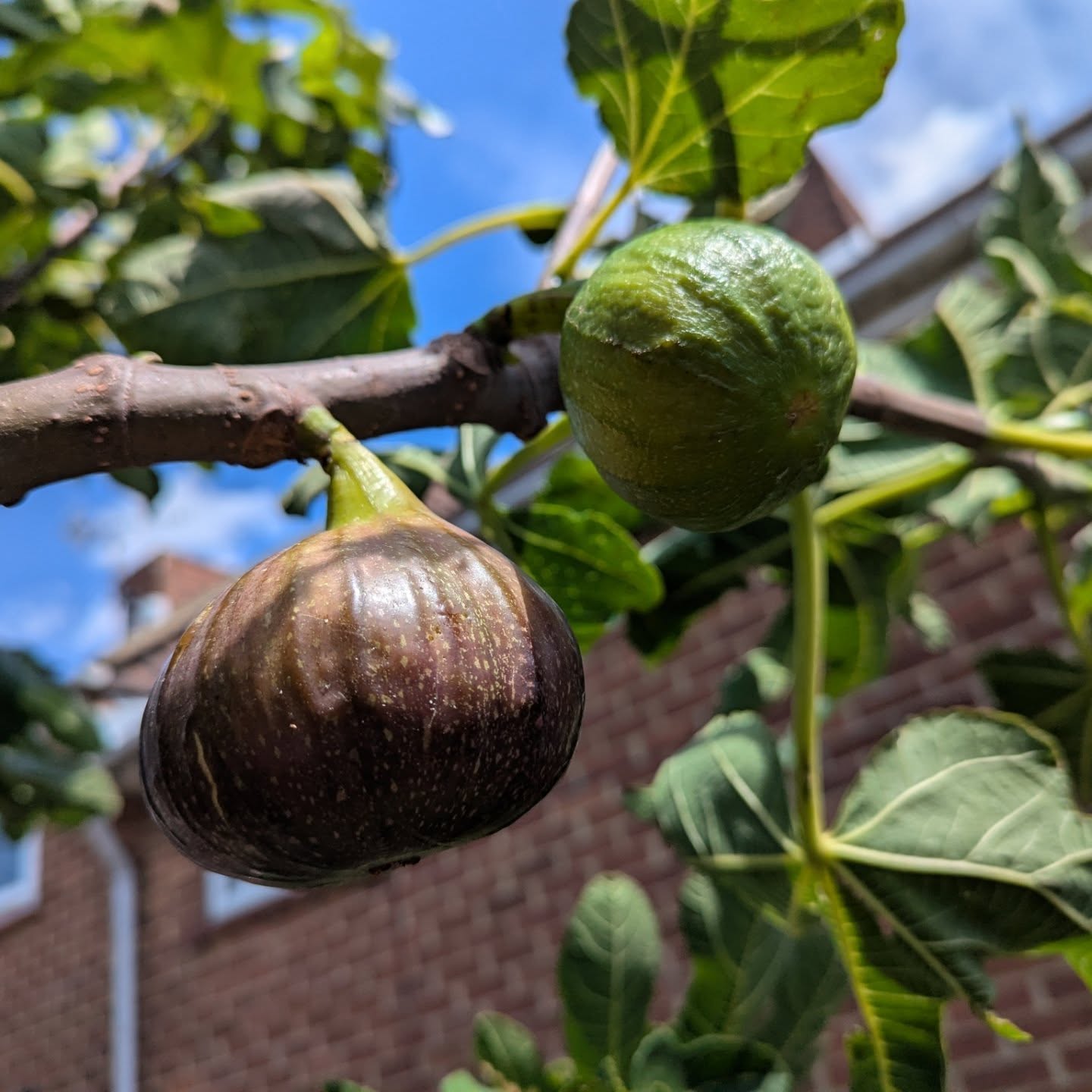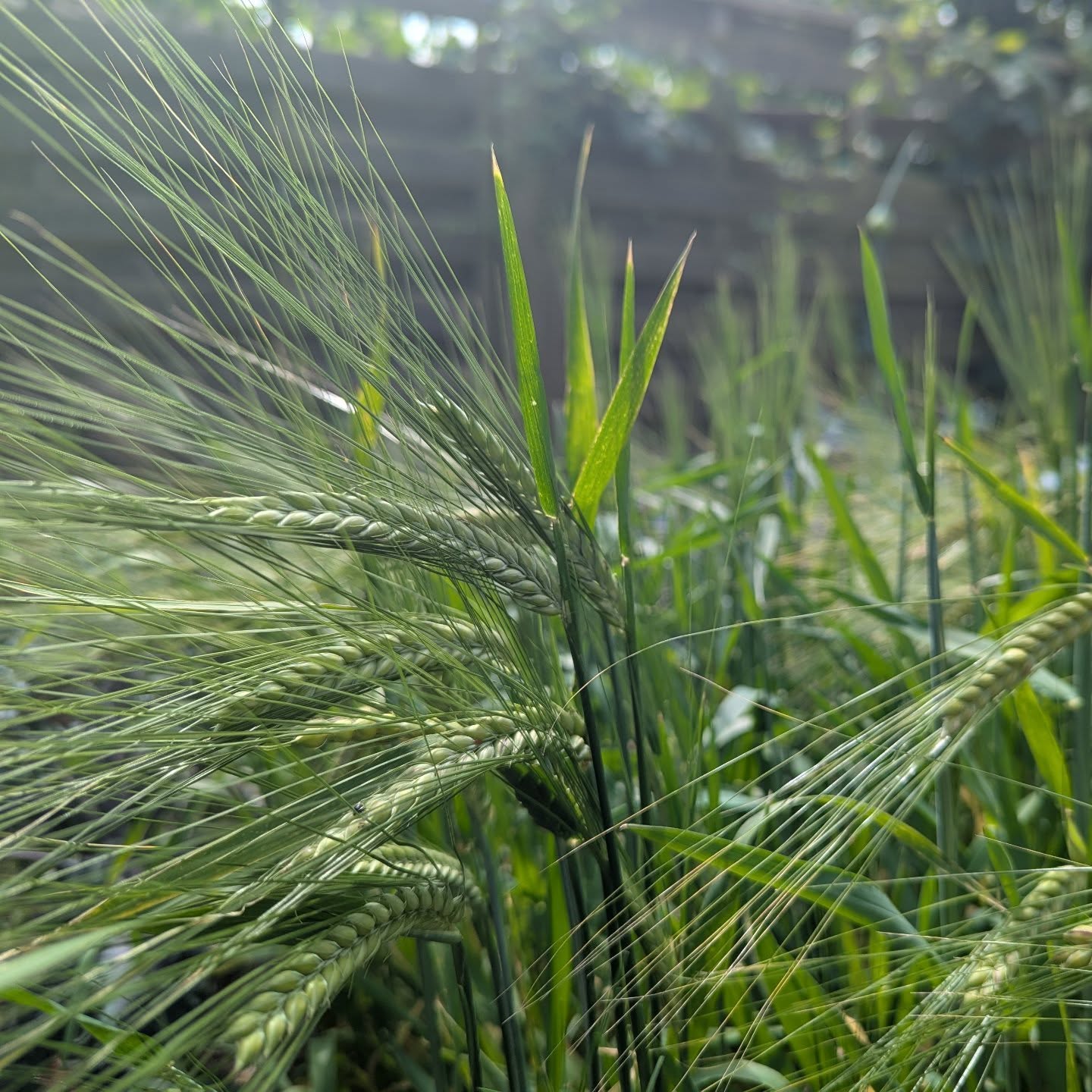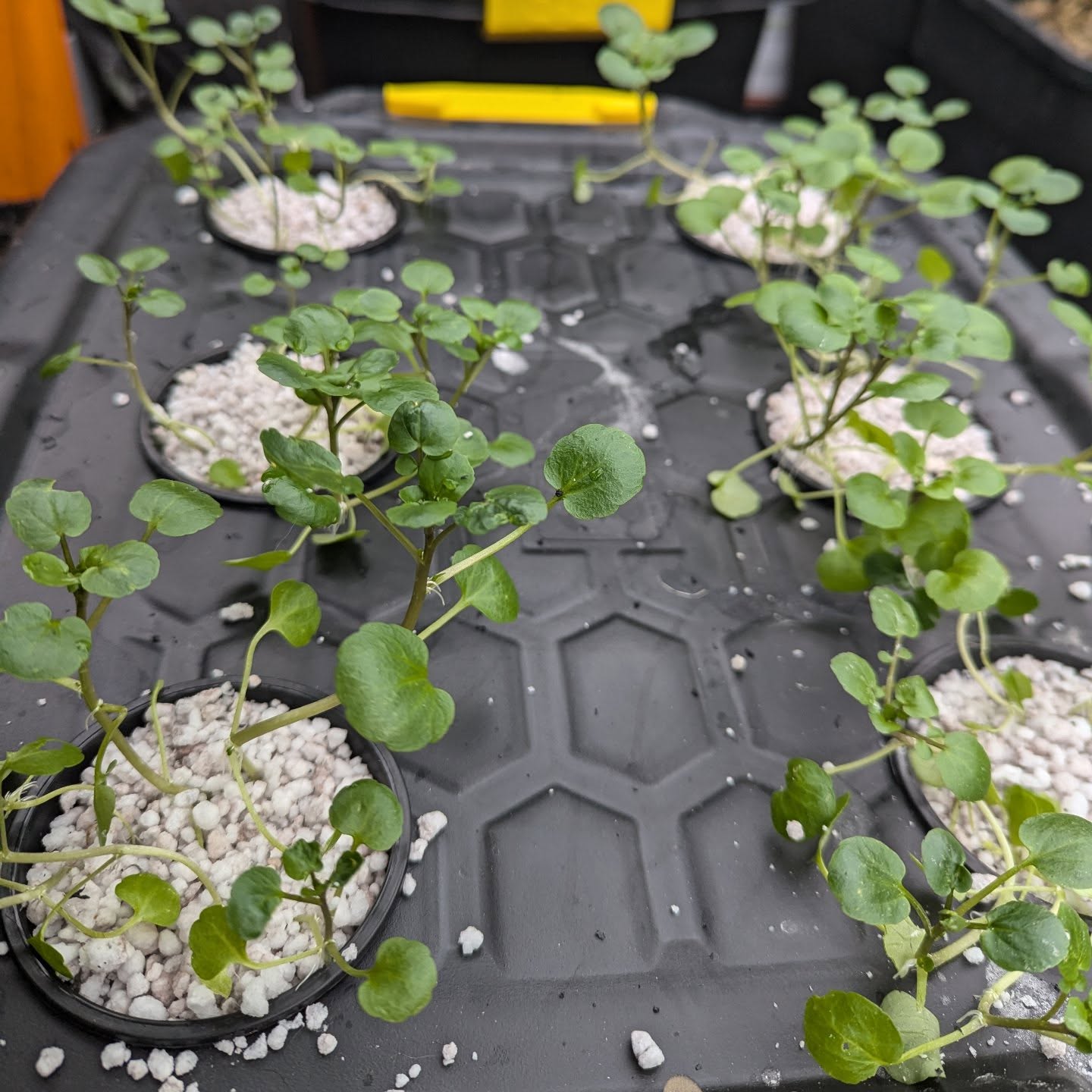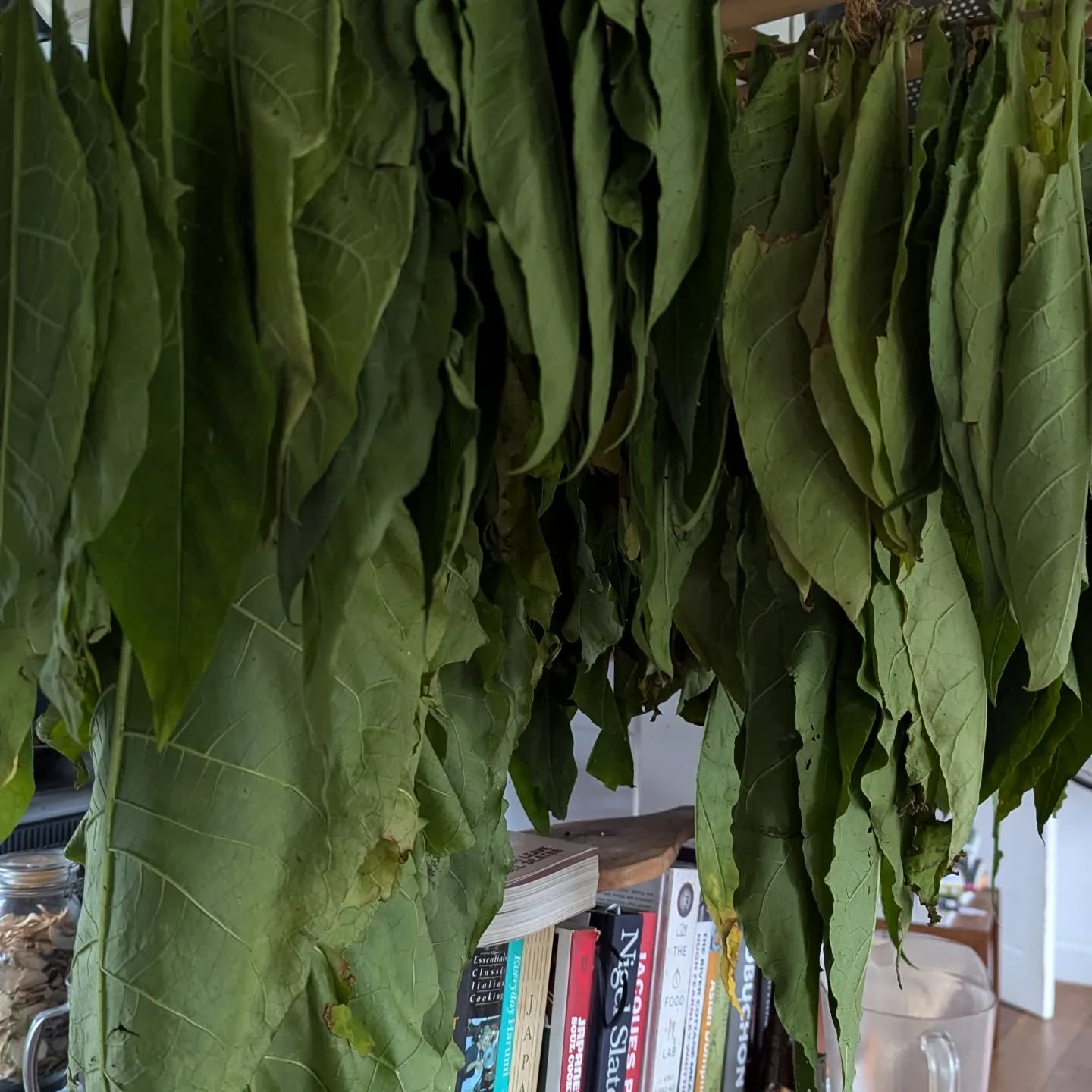· James Torr · Personal · 2 min read
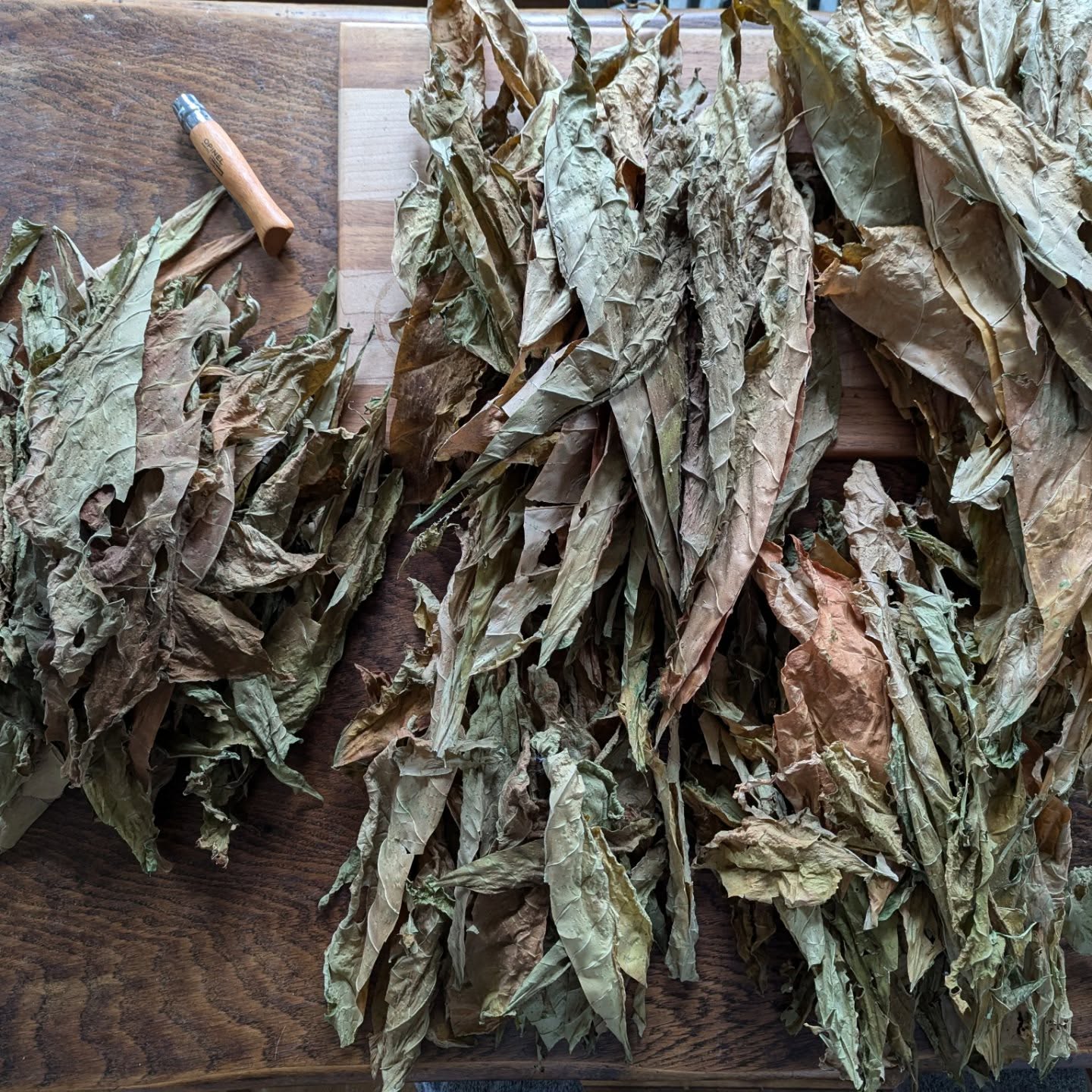
Most of the tobacco leaves from this year's crop have turned a lovely brown colour during the curing process.
Most of the tobacco leaves from this year’s crop have turned a lovely brown colour during the curing process. They’ve been hanging in my kitchen for 8 weeks now. During this time, they’ve slowly dried out and changed colour as the chlorophyll has broken down. This method is known as air curing, and will leave you with leaves with a low sugar content and higher nicotine levels, more commonly used for cigars and pipe tobacco.
After this, generally the leaves are fermented aerobically, in the presence of oxygen. The idea is to break down some of the harsher flavours, allowing a transformation into something more recognisably “tobacco”. The leaves are often kept whole, and a fermentation chamber is used with temperature and humidity regulation, daily turning to avoid mould for around a month.
Aside from the occasional cigar, I’m not a smoker, so I really didn’t want to bother with this, so found a simpler method. The carotte came up in a search on an online forum, this looked like a simpler way to ferment the tobacco. The big advantage is that it’s an anaerobic process, with no oxygen to worry about, the chance of mould is very low. Plus they store away rather easily.
Simply, the process was this: (wearing latex gloves) de-stem the leaves, spray with water, pile in a layer, tightly roll, wrap with plastic, tape up with fibreglass tape, tighten with bine. Ideally, no part should be exposed to air, and the carotte should be very tightly compressed.
I’m going to leave them for a minimum of 3 months, possibly longer. I’ve no idea about the results really, it was just a fun experiment. Like I said, I’m not a smoker, so will likely just be giving this away if it’s smokeable. Or maybe I’ll try some in a cheap corn pipe.

